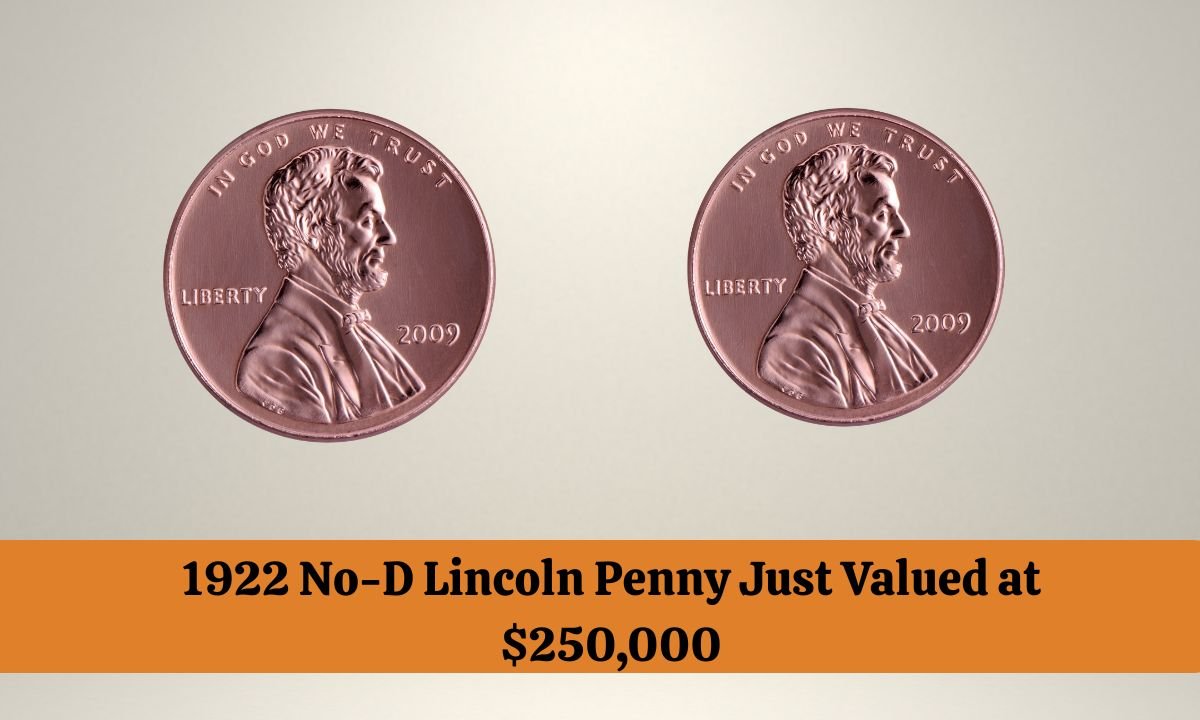Have you ever thought that a tiny old penny sitting in a jar could be worth a small fortune? Well, that’s exactly the case with the rare 1922 No-D Lincoln Penny. This little coin recently made headlines after being valued at an incredible $250,000. Imagine turning a single cent into a quarter of a million dollars. Sounds unbelievable, right? But it’s true. Let’s dive into why this penny is so special, how it came to exist, and how you can spot one if you happen to come across it.
The Story Behind the 1922 No-D Penny
Back in 1922, pennies were only made at the Denver Mint. Normally, every penny from Denver has a tiny “D” mintmark under the year. But due to worn-out coin dies and striking errors, some pennies came out without the “D.” Collectors now call these mistakes the No-D Lincoln Pennies.
At the time, nobody thought much about it. After all, it was still just a penny. But as years passed, collectors realized how rare these coins were. And as the saying goes, rarity plus demand equals value.
Why Is It Worth So Much
Think of it like a misprint on a famous baseball card or a limited-edition toy with a mistake. Errors often make items even more desirable. The 1922 No-D penny is one of those “happy accidents.” Because so few were made and even fewer survived in good condition, the price skyrocketed.
While most pennies are only worth their face value, this one is like a diamond in a sea of pebbles. A single coin in excellent condition recently sold for about $250,000. That’s enough to buy a house, a luxury car, or even pay off debt.
How to Identify a 1922 No-D Penny
So, how can you tell if the penny in your pocket is one of these rare gems? Here’s what you should look for:
- No Mintmark: Check right below the date “1922.” A regular Denver penny will have a small “D.” If yours doesn’t, you may have found a treasure.
- Sharp Details: On real No-D pennies, Lincoln’s face and the reverse design (the wheat stalks) are usually clear and sharp.
- Condition Matters: The better shape it’s in, the higher the value. Even worn-out ones can be worth hundreds, but a mint-condition coin is the jackpot.
- Professional Grading: To be sure, send the coin to a grading service like PCGS or NGC. They can confirm its authenticity and value.
Think of it like checking an old painting — you wouldn’t know if it’s real or fake without an expert’s eye.
Could You Have One Without Knowing
It’s possible. Many families keep jars of old coins or inherit collections from grandparents. Who knows? That dusty jar in your kitchen or attic could be hiding a fortune. This is why coin collectors often say, “Always check your change.” You never know what history or value might be hiding in plain sight.
Why Collectors Love This Coin
Collectors are always chasing stories, and the 1922 No-D penny has a fascinating one. It’s not just about money. It’s about holding a piece of history that shouldn’t even exist. Owning one feels like owning a mystery that slipped past the mint workers over a century ago.
Conclusion
The 1922 No-D Lincoln Penny is a perfect example of how something so small can carry such incredible value. From a simple minting error to a $250,000 treasure, it shows us that rare finds can pop up anywhere. So, the next time you come across old coins, take a closer look. That ordinary penny might just be worth more than gold.
